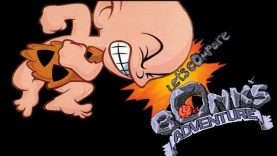Let’s Compare ( Missile Command )
Gaming History Source
Video Locations
Arcade 0:45
Emerson Arcadia 2001 2:04
Enterprise 128 3:33
Game Gear 4:52
Genesis / Megadrive 6:21
Atari 2600 7:56
Atari 5200 / 800 / XE 9:15
ZX Spectrum 10:34
Commodore 64 11:52
Gameboy / Gameboy color 13:24
Amiga 14:43
BBC Micro 16:13
Lynx 17:42
Sega Master System 19:01
MSX 20:35
Flash 22:04
Flash 23:39
Sharp x68000
Intro 25:08
Gameplay 25:47
Playstation
Intro 27:36
Classic Gameplay 28:36
Cinema 30:04
3D Gameplay 31:09
Windows 32:36
Vectrex 34:11
Description Source:
http://en.wikipedia.org/wiki/Missile_Command
Missile Command is a 1980 arcade game by Atari, Inc. that was also licensed to Sega for European release. It is considered one of the most notable games from the Golden Age of Video Arcade Games. The plot of Missile Command is simple: the player’s six cities are being attacked by an endless hail of ballistic missiles, some of them even splitting like multiple independently targetable reentry vehicles (MIRVs), and in later levels smart bombs which can evade a less than perfectly targeted missile. As a regional commander of three anti-missile batteries, the player must defend six cities in their zone from being destroyed.
Gameplay
The game is played by moving a crosshair across the sky background via a trackball and pressing one of three buttons to launch a counter-missile from the appropriate battery. Counter-missiles explode upon reaching the crosshair, leaving a fireball that persists for several seconds and destroys any enemy missiles that enter it. There are three batteries, each with ten missiles; a missile battery becomes useless when all its missiles are fired, or if the battery is destroyed by enemy fire. The missiles of the central battery fly to their targets at much greater speed; only these missiles can effectively kill a smart bomb at a distance.
The game is staged as a series of levels of increasing difficulty; each level contains a set number of incoming enemy weapons. The weapons attack the six cities, as well as the missile batteries; being struck by an enemy weapon results in destruction of the city or missile battery. Enemy weapons are only able to destroy 3 cities during one level. A level ends when all enemy weaponry is destroyed or reaches its target. A player who runs out of missiles no longer has control over the remainder of the level. At the conclusion of a level, the player receives bonus points for any remaining cities or unused missiles. Between levels missile batteries are rebuilt and replenished; destroyed cities are rebuilt only at set point levels (usually 10 or 12K).
The game inevitably ends when all six cities are destroyed, unless the player manages to score enough points to earn a bonus city before the end of the level. Like most early arcade games, there is no way to “win” the game; the game just keeps going with ever faster and more prolific incoming missiles. The game, then, is just a contest in seeing how long the player can survive. On conclusion of the game, the screen displays “The End”, perhaps a poke at oncoming Nuclear Holocaust rather than the standard “Game Over” text. This conclusion is skipped, however, if the player makes the high score list and the game prompts the player to enter his/her initials.
The game features an interesting bug: once a score of 810,000 is reached, a large number of cities are awarded (176 cities plus the continuing accrual of bonus cities) and it is possible to carry on playing for several hours. At some later stage the speed of missiles increases greatly for a few screens. On the 255th and 256th yellow screens, known as the 0x stages, the scoring increases by 256 times the base value. For good players these two 0x stages could earn over a million points. This enabled them to reach a score of approximately 2,800,000 (although only 6 digit scores were shown, so it would display 800,000) and at this point the accelerated rate would suddenly cease and the game would restart at its original (slow) speed and return to the first stage, but with the score and any saved cities retained. In this way it was possible to play this game for hours on end.
If you would like to support Gaming History Source. You can do so by making donations at. http://www.patreon.com/ghs













